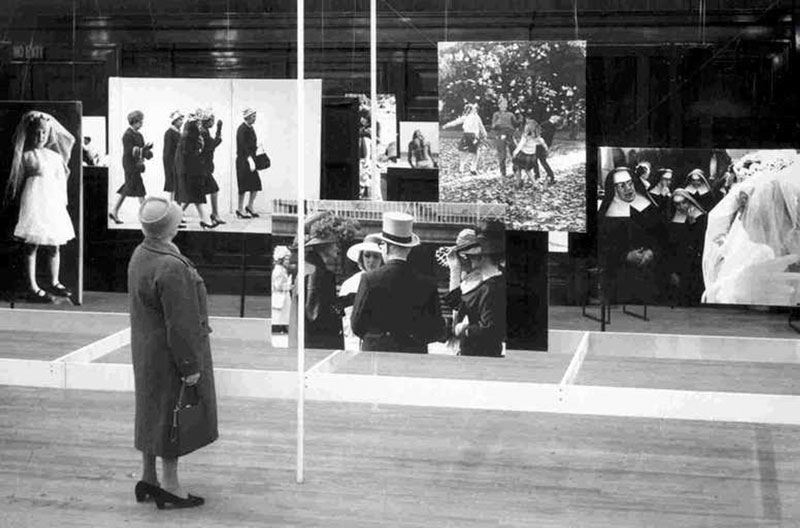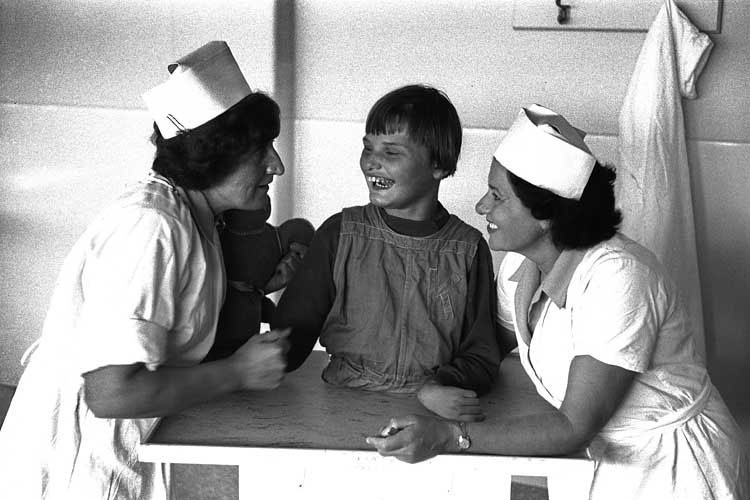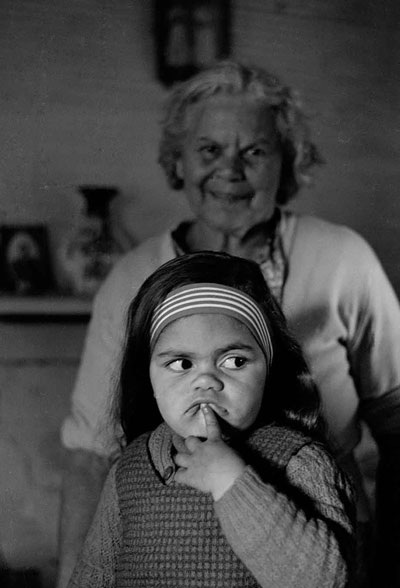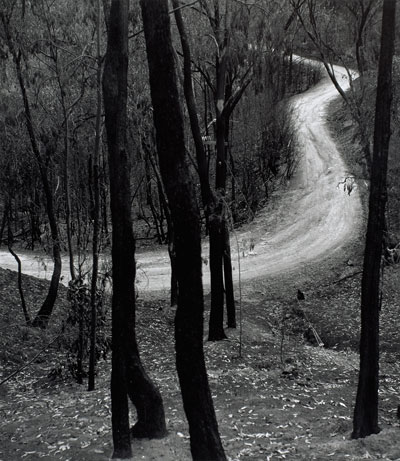The Rise of Group M
From a document supplied by Albert Brown
Based on the social network established by the Clickers in the late 50's, some of the Clickers decided to take positive action to produce work based on documentary photography. They had found the camera clubs at that time had not recognised this important aspect of photography, rather they concentrated on technique and the pictorial approach.
In 1959 an annual international exhibition Photovision was established. At that time the United Moggs Organisation rented premises in Pink Alley, so the work was displayed there. The response internationally, was disappointing. It was considered that the name, "Moggs Creek Clickers" was not being taken seriously. Thus the name was changed to Group M. About that time Richard Woldendorp from Perth and Lance Nelson from Sydney joined Group M.
George Bell suggested the Museum of Modern Art & Design host the Photovision. But it was John Crook who persuaded John Reed, the Director of the Museum to display Photovision. From 1960 to1965 Photovision was seen at the Museum. In 1964 Photovision was also shown in Bowman Arcade, Adelaide and in the Queen Victoria Museum and Art Gallery, Launceston.
In 1963 the group's major project, "Urban Woman" was displayed in the Melbourne Town Hall and subsequently in the Queen Victoria Museum & Art Gallery and the Perth Town Hall. Under the aegis of the Federal Government "Urban Woman" was sent to Mexico City for the 1968 Olympic Games, as part of Australia's cultural contribution to the event. Three years later it was returned in tatters.
In his thesis, "Deeper Feeling, Wider Vision", Philip Bentley covers the history of Group M. He states, "Even more important, the group's concerted lobbying of art and archive institutions to raise the respect accorded photography contributed to the creation of the Photographic Department at the National Gallery of Victoria in 1967."
In 2002, Isobel Crombie, Senior Curator, Photography, published "2nd Sight", which is an account of the NGV's Department of Photography. She states, "One such new association was Melbourne's Group M, who maintained a profile in the 1960s by organising large scale exhibitions. Group M's burst of activity on the local scene may have helped persuade at least some of the NVG Trustees that photography was a fertile area of both historical and contemporary practice." This publication which details the estaoiishment and the current collection of over ten thousand photographs can be purchased from the Gallery Bookshop, Federation Square.
In 1968, soon after the establishment of NVG's Department of Photography, Group M persuaded John Szarkowksi, Director of Photography at the Museum of Modern Art, New York to send their touring exhibition, "The Photographer's Eye" to Melbourne. At the time the NVG was moving from the Museum to the new premises in St Kilda Road. As a result, the grand Verdon gallery displayed "The Photographer's Eye"; the first exhibition of the newly established department. In reviewing this exhibition Patrick McCaughey wrote," The palace of art has only reluctantly admitted photography into its portals."
Thus the work and the efforts of Group M, during the decade up to 1968 has had a more lasting effect than members would have believed possible at the time.
The 'Clickers' Contributionto Australia's Photography History
By pursuing documentary photography as a means of commenting on the human condition the Clickers helped the art community in Australia accept the photographic medium as a legitimate and respected part of the world of artistic expression.
The Clickers two major exhibitions were, 'Urban Woman', Melbourne Town Hall, 1963, and, 'A Time to Love', Museum of Modern Art ( Melbourne) 1965.

'Urban Woman' Exhibition: Photo shows one section of this large thematic exhibition which portrayed the life of women, from birth to death, in Australia's urban settings of the 1960's.
Prints from photo exhibition 'A Time to Love'. Each of Four Group M photographers concentrated on a specific tragic aspect of life.
| Roy McDonald: 'The Disabled' |
 |
| |
|
| |
|
| Albert Brown: 'Lake Tyres Settlement' |
 |
| |
|
| |
|
| George Bell: 'Bushfire Aftermath' |
 |
| |
|
| |
|
| John Crook: 'Geriatrics' |
 |
| |
|
| |
|
| |
|
> About Group M
> Group M Homepage
> Philip Bentley's thesis on Group M
|